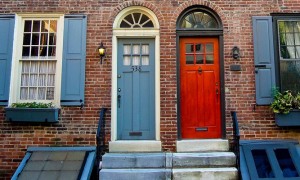Brought to you by Andersen Windows
The weather outside may be frightful, but should you be alarmed about that condensation you see forming around the outside edges of your window glass?
That’s a question we hear quite often around this time of year at Andersen. The good news is the condensation doesn’t mean that your windows have somehow failed or are about to fail. In most cases, it is simply a sign that a lot of the things you’ve done to make your home energy efficient – windows and doors that reduce air leakage, weather-stripping, upgraded insulation, vapor barriers, and airtight construction techniques – are working the way they’re supposed to.
Condensation can form on interior glass surfaces when there is too much moisture in the air. Winter air is typically drier and colder outside, whereas interior home air is warmer and more humid. Much like a glass full of ice water on a warm summer day, condensation appears where the warm air meets the cooler surface.
The video below helps explain how condensation forms inside a home.
Regardless of their efficient features, windows typically represent the coolest areas of interior walls. So, when the warmer air of the interior comes in contact with the cool glass of the windows, the air is cooled and (if there is enough moisture in the air) the water in the air will condense. In cold-weather climates, moist air that comes into contact with the cooler glass surface may cool enough to form frost.
Most industry experts recommended your indoor humidity levels in winter months should not exceed 30-35%. If you don’t have one already, you can purchase a hygrometer to measure the humidity levels in your home. Some suggestions to help reduce your indoor humidity level include:
- Checking your ventilation
- Using a dehumidifier
- Turning the humidifier on your furnace down (or off)
- Keep window blinds or curtains open during the day
- Leave ceiling fans on to promote air movement
- Use an exhaust fan in bathroom areas when showering
If window condensation continues to be a concern for you, you may want to consult with a heating and air conditioning specialist.
Header Image from 605 Divide Drive, Snowmass Village, CO listed by Carrie Wells with Coldwell Banker Mason Morse Real Estate






